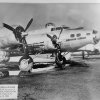Serb immigration to the U.S. began in the second half of the nineteenth century. The first Serbian American churches, cultural institutions, fraternal organizations and newspapers were established in the last two decades of the nineteenth century. There were three periods in the early stages of Serbian American cultural history. They were associated with three cities in which cultural activities were concentrated: San Francisco, Pittsburgh, and Chicago. The present study is focused on the earliest phase in the growth of the Serbian American community in Chicago, which is least known and researched. It covers the years ending with the first decade of the twentieth century.
1. Chicago from Serbian Perspective
The earliest account of Chicago from Serbian perspective comes from Nikola Jovanović, the author of Phoenix City (Feniks grad), a booklet written in Serbian and published in Belgrade in 1895.
Jovanović was from a fairly well-off family in Serbia, so the reasons for his trip to the U.S. in 1869 were neither economic nor political. He came to Chicago with two close Serbian friends. All three were young and adventurous. Unlike his friends, Jovanović was keen on advancing his education, so he spent a year studying in Chicago before moving to other universities in New York. While his two friends settled in the new country, Jovanović eventually returned to Serbia, where he lectured and worked as a journalist. In December 1894, Jovanović, also known as “the American,” delivered an interesting lecture at the University of Belgrade. On this occasion, he shared his experience of America with an audience eager to know more about this far-away country. By this time, the U.S. had become the most attractive destination for thousands of European immigrants seeking democracy and economic opportunities. Due to this interest, Jovanović’s lecture was published in Belgrade the following year.
The “phoenix” metaphor refers to the rebirth of Chicago from the ashes of the great fire that swept through the city in 1871, the year Jovanović was there as a student. Although he left to pursue his studies in New York, Jovanović revisited Chicago nine months later and was amazed at the reconstruction and growth of the city. He wrote how Chicago had risen like a phoenix on the wings of “labor” and “order.” Jovanović emphasized that the reason why he admired the people of Chicago was their moral fortitude rather than the physical strength necessary to rebuild the city.
According to Jovanović, Chicago was the city of cities. In this context he draws an interesting comparison: just like America, Serbia can strive and grow on moral strength, labor, and the love of its people. This is the main point of Jovanović’s lecture. In a reference to Serbian history, he points out how difficult it was for the small Serbian nation, subjugated for centuries and reduced to utter poverty, to rise towards freedom and progress. The Serbs, wrote Jovanović, had already risen from the ashes of history. The Serbs had not only restored their freedom, but had also resurrected their state that had been “entombed” for centuries.
The tasks of “our time” are much easier, wrote Jovanović, but the force behind the rebirth of nations, countries and cities is the force of human endeavor and entrepreneurship—“the holy fire of human labor.” In conclusion, he declares the time has come to create a new Belgrade in the embrace of the two rivers, the Sava and the Danube, so Belgrade could become “the phoenix of Eastern Europe.”
Unlike Jovanović, who was a thoughtful student rather than a toiling immigrant, the Serb immigrants arriving in America during this period found low paying industrial jobs, lived in ethnic ghettoes, had a hard time learning English and no time for education. Their cultural isolation was double: they were eradicated from the original environment in the Old Country and not yet integrated in the new American environment. Thus they sought to transplant their culture in America and to preserve the main features of their identity: religion, language, customs, and tradition. In order to do so, they began organizing themselves. Their first organizations were cultural, educational and religious. These were followed by fraternal organizations providing basic social and health insurance.
.




